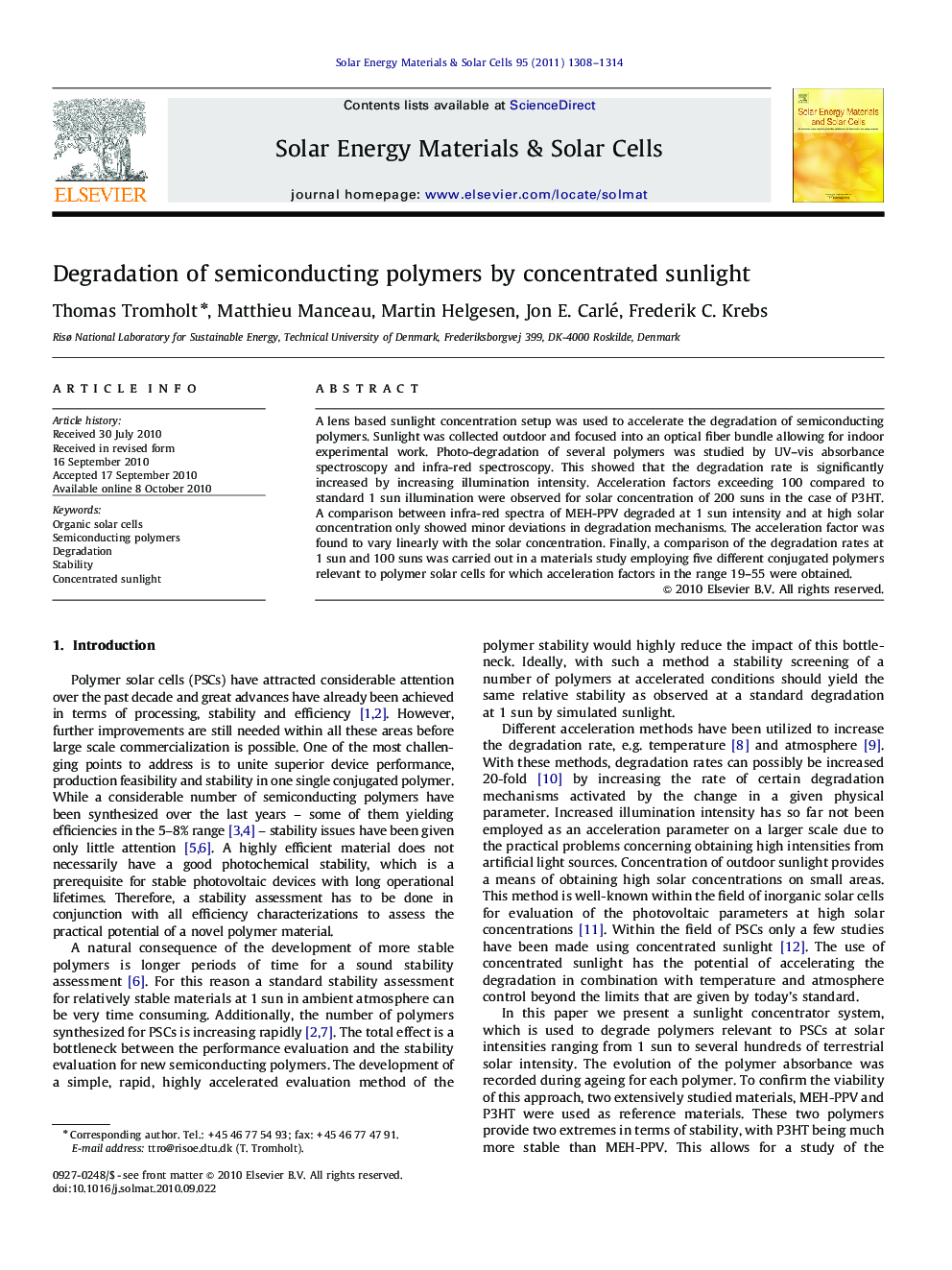| Article ID | Journal | Published Year | Pages | File Type |
|---|---|---|---|---|
| 79053 | Solar Energy Materials and Solar Cells | 2011 | 7 Pages |
A lens based sunlight concentration setup was used to accelerate the degradation of semiconducting polymers. Sunlight was collected outdoor and focused into an optical fiber bundle allowing for indoor experimental work. Photo-degradation of several polymers was studied by UV–vis absorbance spectroscopy and infra-red spectroscopy. This showed that the degradation rate is significantly increased by increasing illumination intensity. Acceleration factors exceeding 100 compared to standard 1 sun illumination were observed for solar concentration of 200 suns in the case of P3HT. A comparison between infra-red spectra of MEH-PPV degraded at 1 sun intensity and at high solar concentration only showed minor deviations in degradation mechanisms. The acceleration factor was found to vary linearly with the solar concentration. Finally, a comparison of the degradation rates at 1 sun and 100 suns was carried out in a materials study employing five different conjugated polymers relevant to polymer solar cells for which acceleration factors in the range 19–55 were obtained.
Graphical abstractFigure optionsDownload full-size imageDownload as PowerPoint slideResearch highlights► Degradation of semiconducting polymers was accelerated by concentrated sunlight. ► Acceleration factors exceeding 100 were obtained compared to 1 sun illumination. ► Acceleration factors in the range 19–55 at 100 suns were found for 5 polymers. ► The method can be used as an accelerated lifetime test for polymer stability screening.
